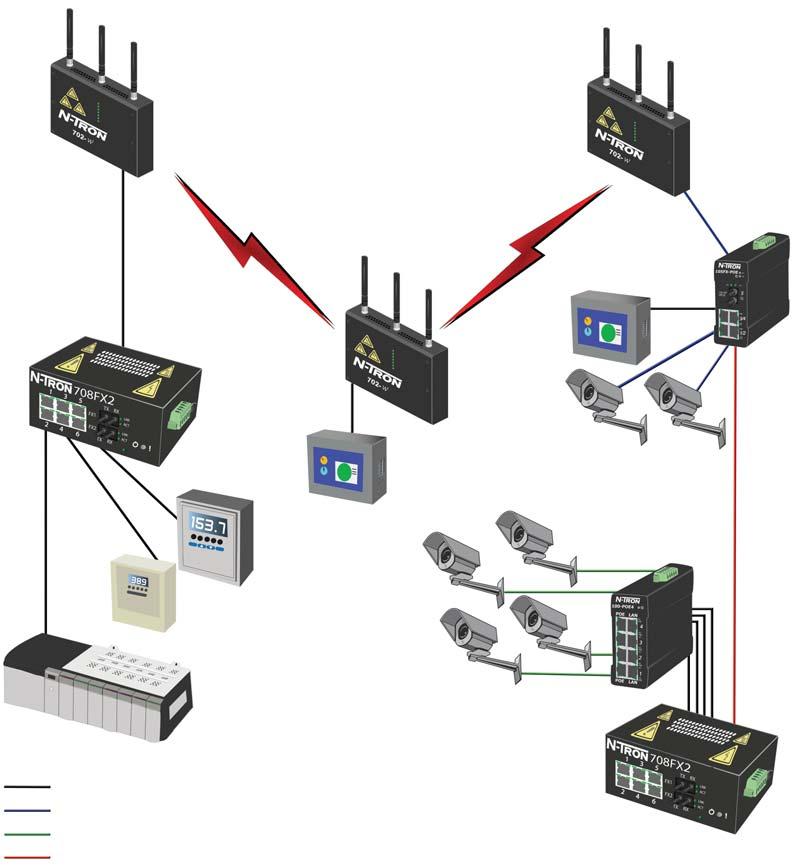1. EXECUTIVE SUMMARY
- CVSS v3 9.8
- ATTENTION: Exploitable remotely/low skill level to exploit
- Vendor: Red Lion
- Equipment: N-Tron 702-W / 702M12-W
- Vulnerabilities: Reflected Cross-site Scripting, Stored Cross-site Scripting, Cross-site Request Forgery, Hidden Functionality, Use of Unmaintained Third-Party Components
2. RISK EVALUATION
Successful exploitation of these vulnerabilities could allow an attacker to gain unauthorized access to sensitive information, execute system commands, and perform actions in the context of an attacked user.
3. TECHNICAL DETAILS
3.1 AFFECTED PRODUCTS
The following Red Lion products are affected:
- N-Tron 702-W: All versions
- N-Tron 702M12-W: All versions
3.2 VULNERABILITY OVERVIEW
3.2.1 IMPROPER NEUTRALIZATION OF INPUT DURING WEB PAGE GENERATION (‘CROSS-SITE SCRIPTING’) CWE-79
The affected product is vulnerable to reflected cross-site scripting, which may allow an attacker to remotely execute arbitrary code and perform actions in the context of an attacked user.
CVE-2020-16210 has been assigned to this vulnerability. A CVSS v3 base score of 9.0 has been calculated; the CVSS vector string is (AV:N/AC:L/PR:L/UI:R/S:C/C:H/I:H/A:H).
3.2.2 IMPROPER NEUTRALIZATION OF INPUT DURING WEB PAGE GENERATION (‘CROSS-SITE SCRIPTING’) CWE-79
The affected product is vulnerable to stored cross-site scripting, which may allow an attacker to remotely execute arbitrary code to gain access to sensitive data.
CVE-2020-16206 has been assigned to this vulnerability. A CVSS v3 base score of 9.0 has been calculated; the CVSS vector string is (AV:N/AC:L/PR:L/UI:R/S:C/C:H/I:H/A:H).
3.2.3 CROSS-SITE REQUEST FORGERY (CSRF) CWE-352
The affected product is vulnerable to cross-site request forgery, which may allow an attacker to modify different configurations of a device by luring an authenticated user to click on a crafted link.
CVE-2020-16208 has been assigned to this vulnerability. A CVSS v3 base score of 8.8 has been calculated; the CVSS vector string is (AV:N/AC:L/PR:N/UI:R/S:U/C:H/I:H/A:H).
3.2.4 HIDDEN FUNCTIONALITY (BACKDOOR) CWE-912
The affected product is vulnerable due to an undocumented interface found on the device, which may allow an attacker to execute commands as root on the device.
CVE-2020-16204 has been assigned to this vulnerability. A CVSS v3 base score of 9.8 has been calculated; the CVSS vector string is (AV:N/AC:L/PR:N/UI:N/S:U/C:H/I:H/A:H).
3.2.5 USE OF UNMAINTAINED THIRD-PARTY COMPONENTS CWE-1104
The affected product is vulnerable due to outdated software components, which may allow an attacker to gain access to sensitive information and take control of the device.
CVE-2017-16544 has been assigned to this vulnerability. A CVSS v3 base score of 8.8 has been calculated; the CVSS vector string is (AV:N/AC:L/PR:L/UI:N/S:U/C:H/I:H/A:H).
3.3 BACKGROUND
- CRITICAL INFRASTRUCTURE SECTORS: Commercial Facilities, Energy, Transportation Systems, Water and Wastewater Systems
- COUNTRIES/AREAS DEPLOYED: Worldwide
- COMPANY HEADQUARTERS LOCATION: United States
3.4 RESEARCHER
Thomas Weber from SEC Consult Vulnerability Lab reported these vulnerabilities to CISA.
4. MITIGATIONS
Red Lion’s 702-W Series was discontinued in 2018 and cannot be updated. Red Lion recommends these products be used locally within a secure network.
CISA recommends users take defensive measures to minimize the risk of exploitation of this vulnerability. Specifically, users should:
- Minimize network exposure for all control system devices and/or systems, and ensure that they are not accessible from the Internet.
- Locate control system networks and remote devices behind firewalls, and isolate them from the business network.
- When remote access is required, use secure methods, such as Virtual Private Networks (VPNs), recognizing that VPNs may have vulnerabilities and should be updated to the most current version available. Also recognize that VPN is only as secure as the connected devices.
CISA also recommends users take the following measures to protect themselves from social engineering attacks:
- Do not click web links or open unsolicited attachments in email messages.
- Refer to Recognizing and Avoiding Email Scams for more information on avoiding email scams.
- Refer to Avoiding Social Engineering and Phishing Attacks for more information on social engineering attacks.
CISA reminds organizations to perform proper impact analysis and risk assessment prior to deploying defensive measures.
CISA also provides a section for control systems security recommended practices on the ICS webpage on us-cert.gov. Several recommended practices are available for reading and download, including Improving Industrial Control Systems Cybersecurity with Defense-in-Depth Strategies.
Additional mitigation guidance and recommended practices are publicly available on the ICS webpage on us-cert.gov in the Technical Information Paper, ICS-TIP-12-146-01B–Targeted Cyber Intrusion Detection and Mitigation Strategies.
Organizations observing any suspected malicious activity should follow their established internal procedures and report their findings to CISA for tracking and correlation against other incidents.
No known public exploits specifically target these vulnerabilities.
Source:
